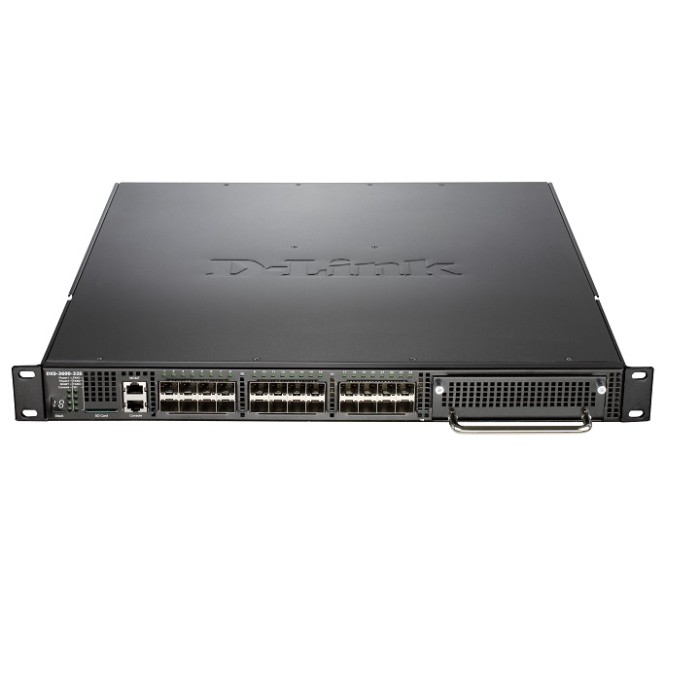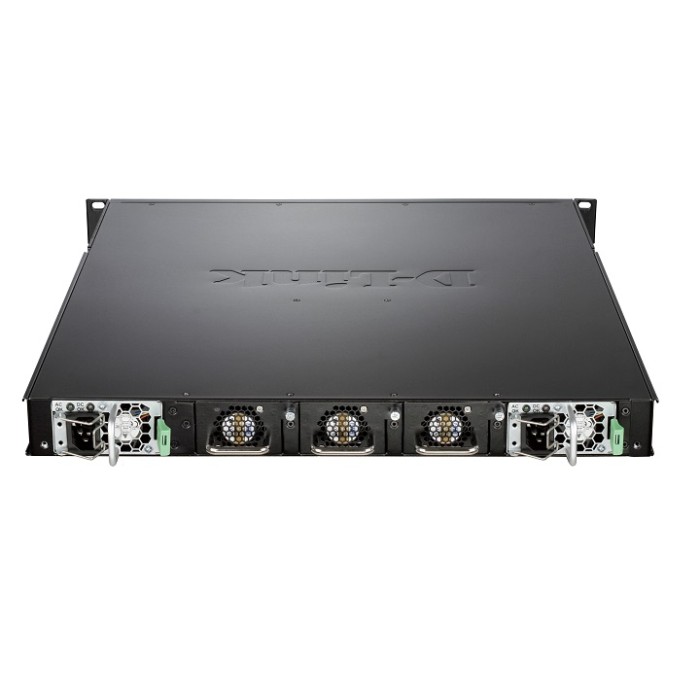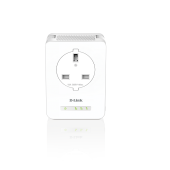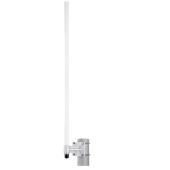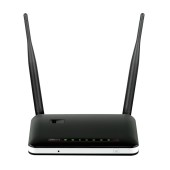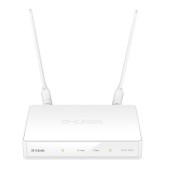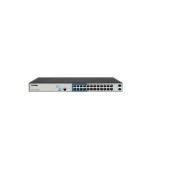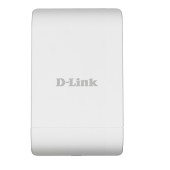D-Link DXS-3600-32S 24-Port 10 Gigabit L2/L3 Managed Aggregation Switch
D-Link DXS-3600-32S 24-Port 10 Gigabit L2/L3 Managed Aggregation Switch
SPECIFICATION
Features:
Common
• Interfaces: 24 fixed 10 Gigabit ports with one expansion module
• Console port: port with RJ-45 connector to control the (out-of-band)
• Control Port: Port 10/100/1000 Base-T with RJ-45 connector for remote management (out-of-band)
• Slot for SD-card
DDM (Digital Diagnostics Monitoring) 1
Yes I Am
Performance
• Switching Matrix: 960 Gbit / s
• Max. packet rate: 714,28 Mpps
• Buffer size packages: 9 MB
• MAC-address table: 128 K
Copies of the extended function (EI)
Multicast Layer 3
• Size tables multicast: 2K
• IGMP v1, v2, v3
• PIM-SM
• PIM-DM
• The PIM-Sparse-Dense
• PIM-SSM
• DVMRP v3
• MLD v1 / v2 1
MPLS
• LDP
• MPLS LSP trigger filtering
• Multiprotocol Label Switching (MPLS label-forwarding)
• MPLS QoS
• MPLS ping and traceroute
• L2 protocol tunneling through PW
• VPWS
• VPLS
• PW Redundancy
Function level 3
• IPv6 Tunneling 1
- Static
- ISATAP
- GRE
- 6to4
• VRRP
Layer 3 VPN
• MPLS / BGP L3 VPN
• Virtualization Technology VRF-Lite
• MP-BGP
• VRF aware application
Layer 3 routing
• Supports up to 16K entries routes IPv4 / IPv6
- Max. 16K IPv4 records
- Max. 8K IPv6 records 1
• Supports 8K L3 shared items sent to IPv4 / IPv6
- Max. 8K IPv4 records
- Max. 4K IPv6 records 1
• RIP
- RIP v1 / v2
- RIPng 1
• OSPF
- OSPF v2
- OSPF v3 1
- Passive OSPF interface
- Stub / NSSA Area
- OSPF Equal Cost Route
• BGPv4
• Route redistribution
• IP Directed Broadcast
• Policy-based routing 1
Standard MIB and RFC
• RFC1213 MIB II
• RFC1907 SNMP v2 MIB
• RFC5519 IGMP v3 MIB
• RFC1724 RIP v2 MIB
• RFC2021 RMONv2 MIB
• RFC1643, RFC2358, RFC2665 Ether-like MIB
• RFC4836 802.3 MAU MIB
• RFC4363 802.1p MIB
• RFC2618 RADIUS Authentication Client MIB
• RFC4292 IP Forwarding Table MIB
• RFC2932 IPv4 Multicast Routing MIB
• RFC2934 PIM MIB for IPv4
• RFC2620 RADIUS Accounting Client MIB
• RFC2925 Traceroute MIB
• RFC2925 Ping MIB
• RFC1850 OSPF MIB
• Private MIB
• RFC1112, RFC2236, RFC3376, RFC4541 IGMP Snooping
• RFC4363 802.1v
• RFC2338 VRRP
• RFC1058, RFC1388, RFC1723, RFC2453, RFC2080 RIP
• RFC1370, RFC1765, RFC2328, RFC2740, RFC3101 makes RFC1587 obsolete, RFC2328 makes RFC1583, RFC2178 OSPF v2, v3
• RFC1771, RFC1997, RFC2439, RFC2796, RFC2842, RFC2918 BGP
• RFC3973 PIM-DM
• RFC5059 PIM-SM
• RFC3569, RFC4601, RFC4608, RFC4607, RFC4604 PIM SSM
• RFC3376 IGMP
• RFC2475 Priority Queue Mapping
• RFC2475, RFC2598 Class of Service (CoS)
• RFC2597, RFC2598 QoS Flow Actions
• RFC2697, RFC2698 Three Color MarkerRFC2093, RFC2904, RFC2095, RFC2906 AAA
• RFC1321, RFC2144, RFC2313, RFC2420, RFC2841, RFC3394 Encryption
• RFC2289 One-Time
• RFC3580 802.1X
• RFC2866 RADIUS Accounting
• RFC2138, RFC2139, RFC2865, RFC2618 RADIUS Author. for Management Access
• RFC1492 TACACS + Auth. for Management Access
• RFC2068, RFC2616 Web-based GUI
• RFC854 Telnet Server
• RFC783, RFC1350 TFTP Client
• RFC1157, RFC1901, RFC1908, RFC2570, RFC2574, RFC2575, RFC3411-17 SNMP
• RFC3164 System Log
• RFC2819 RMON v1
• RFC951, RFC1542, RFC2131, RFC3046 BootP / DHCP Client
• RFC1769 Time Setting
• RFC2131 DHCP Server
• RFC1191 MTU Setting
• RFC1065, RFC1066, RFC1155, RFC1156, RFC2578 MIB Structure
• RFC1215 MIB Traps Convention
• RFC4188 Bridge MIB
• RFC1157, RFC2571-2576, RFC3411-3415, RFC3418 SNMP MIB
• RFC1901-1908, RFC1442, RFC2578 SNMP v2 MIB
• RFC2737 Entity MIB
• RFC768 UDP
• RFC791 IP
• RFC792 ICMP
• RFC793 TCP
• RFC826 ARP
• RFC1338, RFC1519 CIDR
• RFC2716, RFC3748 EAP
• RFC2571, RFC2572, RFC2573, RFC2574 SNMP
Nutrition
100-240 VAC, 50/60 Hz
Max. power consumption
• 116,8 W (without extension module)
• 160,4 W (DXS-3600-EM-4QXS)
Power consumption in standby mode
88.2 W
Max. heat release
• 398,29 BTU / h (without extension module)
• 546,96 BTU / hr (with DXS-3600-EM-4QXS
Heat dissipation in standby mode
300,76 BTU / hr
Dimensions
440 x 506 x 44 mm
Weight
10.71 kg
Working temperature
From 0 to 45 C
Storage temperature
From 40 to 70 ° C
Humidity
From 0% to 95% (non-condensing)
Storage Humidity
From 0% to 95% (non-condensing)
Certifications
• Safety: CB, cUL
• EMI / EMC: FCC, CE, C-Tick, IC, VCCI, BSMI
Related Product
The DAP-3410 Wireless N Exterior Access Point is the ideal solution for expanding the coverage and signal strength of any wireless network. Built to withstand harsh environments, the DAP-3410 also excels in connecting separate networks that cannot be joined physically using traditional medium. Multiple operating modes, network management tools, and security
features gives network administrators a wide range of choices for deploying the device, allowing for the addition of increased connectivity to wireless network-enabled devices.
Increased Network Connectivity And Throughput
Expand current wireless network capacity with the latest 5 GHz 802.11a/n wireless connectivity. In addition, two 10/100 Ethernet ports (one supporting PoE) allow for further physical expansion using traditional wired medium. The built-in 10 dBi sector antenna has a high power output6 ensuring that wireless coverage will cover even hard to reach locations. Whether you want to connect additional wireless devices such as smartphones or laptops, or bringing connectivity to networks separated by short distances, the DAP-3410 has it covered.
Flexible Deployment Options
The DAP-3410 features seven multiple operation modes, allowing it to adapt to any situation. As a standard wireless access point (AP) the DAP-3410 can connect to a wide range of devices that are 802.11a/n compliant. In wireless distribution system (WDS) mode it can expand current wireless coverage without the need for a wired backbone link. As a wireless client it can connect to an existing AP and expand the network physically with the two built-in 10/100 Ethernet ports. Repeater mode will extend current wireless coverage eliminating dead spots and weak signals. WISP mode functionality includes the ability to function as a client or repeater.
Fine-Tuned Control Over Network Resources
The DAP-3410 supports up to 8 SSIDs, allowing the administrators to logically divide the access point into several virtual access points all within a single hardware platform. Rather than having separate networks with several access points, administrators can deploy one single AP to support more than one application, such as public Internet access and internal network control to increase flexibility and keep costs down. The DAP-3410 supports 802.1Q VLAN Tagging, operating with multiple SSIDs to segment traffic to enhance performance and security. The DAP-3410 provides WLAN partitioning, a
useful function for deployments such as wireless hot spots. With station-tostation partitioning enabled, security is enhanced, since wireless users cannot peek at each other, and the possibility for data theft is reduced.
Fine-Tuned Control Over Network Resources
The DAP-3410 supports upto 8 SSIDs, allowing the administrators to logically divide the access point into several virtual access points all within a single hardware platform. Rather than having separate networks with several access points, administrators can deploy one single AP to support more than one application, such as public Internet access and internal network control to increase flexibility and keep costs down. The DAP-3410 supports 802.1Q VLAN Tagging, operating with multiple SSIDs to segment traffic to enhance performance and security. The DAP-3410 provides WLAN partitioning, a useful function for deployments such as hot spots. With station-to-station partitioning enabled, security is enhanced, since wireless users cannot peek at each other, and the possibility for data theft is reduced.
Robust Security And Management Tools
The DAP-3410 supports 64/128-bit WEP data encryption and WPA/WPA2 security functions. In addition, it provides MAC Address Filtering to control user access, and the Disable SSID Broadcast function to limit outsiders’ accessto the internal network. Network administrators have multiple options for managing the DAP-3410, including HTTP and HTTPS. For advanced network management, administrators can use SNMPv1, v2c, v3 to configure and manage access points.
Power over Ethernet (PoE)
The DAP-3410 is powered by PoE5 which allows for convenient installation, especially in places where a power supply is not reliable or power cables are not available or easily set up. Also, the DAP-3410 can supply power to a connected D-Link surveillance camera through PoE, including the DCS-3716, DCS-6113, and DCS-7110 cameras.
..

